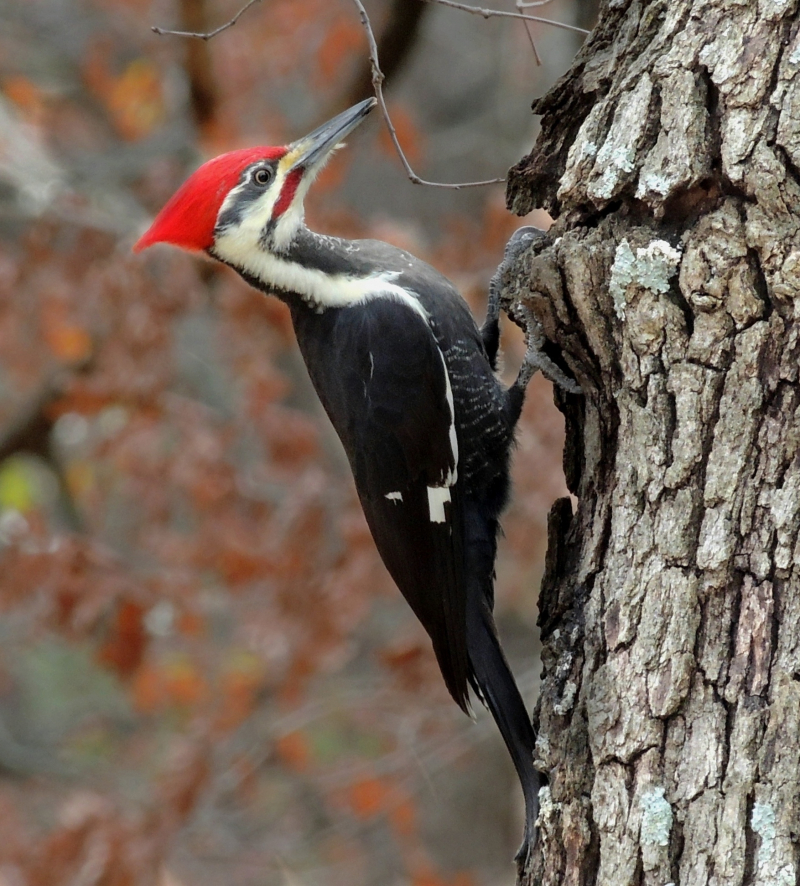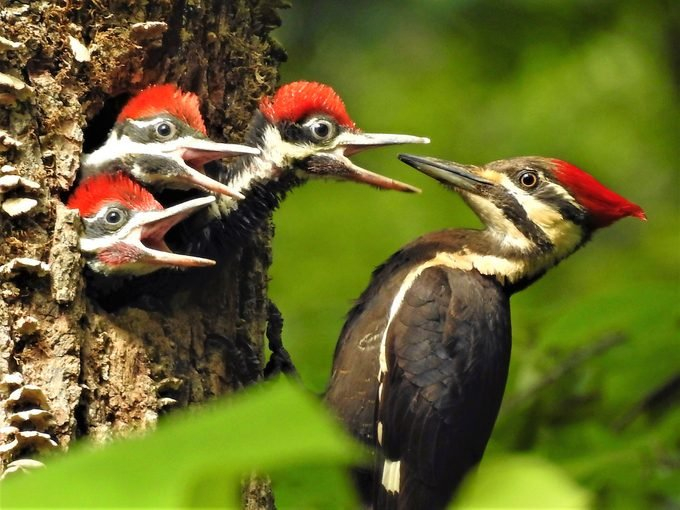Pileated Woodpecker
The Pileated Woodpecker (Dryocopus pileatus) is a large, mostly black woodpecker native to North America. It is an insectivore that lives in deciduous woods in eastern North America, along the Pacific Coast, in Canada's boreal forests, and near the Great Lakes. Except possibly for the ivory-billed woodpecker, which the U.S. Fish and Wildlife Service has suggested be listed as extinct, it is the largest woodpecker species that is still alive in North America. The big slaty woodpecker and the black woodpecker are the two other largest woodpecker species in the world, respectively.
Pileated Woodpecker is a particularly huge woodpecker with a long neck and a triangular crest that sweeps off the rear of the head. About as long as the head, the bill is long and chisel-like. When flying, the bird can resemble a crow because of its large wings. The Pileated Woodpecker has a red crown, white stripes on the face and neck, and a primarily black body. On their cheek, males have a crimson stripe. The bird's large white underwings are visible in flight, as are the little white crescents at the bases of the primaries on the upper side.












